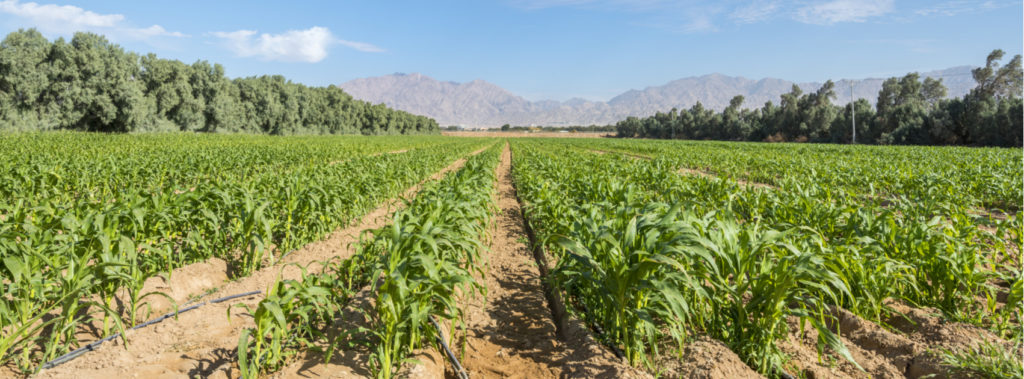“…For those who make the desert bloom there is room for hundreds, thousands and even millions. And the destiny of the state is in the hands of the many rather than of a single individual.” —David Ben-Gurion
When David Ben-Gurion—the first Israeli prime minister—spoke about making the desert bloom, the images of flowers, trees, and lush green plants immediately came to mind. Imagery in the Bible suggests that the desert will “blossom as the rose” (see Isaiah; Amos)—and sure enough, we are starting to see that imagery come to life in kibbutzim that are popping up across the Negev Desert.
But there is still even more in store for Israel. God has plans for Israel that stretch beyond our wildest imagination—and the best is yet to come.
“I will plant in the wilderness the cedar and the acacia tree, the myrtle and the oil tree; I will set in the desert the cypress tree and the pine and the box tree together, that they may see and know, and consider and understand together, that the hand of the Lord has done this, and the Holy One of Israel has created it.”—Isaiah 41:19-20
Speaking through the Bible, God told us of His plans to plant things in the desert that do not grow there naturally—so that all would come to understand the limitlessness of his power and ability to create miracles. Little did we know that His plans were for more than just trees…
A Different Kind of Plant
It’s hard to miss the transformation of the Negev Desert, as olive groves and vineyards emerge from the dust and make the land literally greener. Meanwhile…another kind of plant has sprouted up and has played a huge part in making Israel’s economy greener!
These plants have no roots, need no water, and can live almost as long as olive trees. Negev Energy has built three massive solar energy power plants in the Negev Desert since 2014, an investment of nearly $2 billion that spans over several square miles.
The impact of these towers is huge. Not only can one of them supply energy to more than 60,000 Israeli homes by itself—but, together, the towers will reduce carbon emissions for Israel drastically…an estimated 250,000 tons of carbon emissions per year. This rate is the equivalent of taking 50,000 cars off the road each year, and with improvements in development of biofuel in Israel, that might be right around the corner.
Saving for a Rainy Day
The obvious disadvantage of solar energy is that during rainy or cloudy days, the panels will generate less energy, due to a lack of sunlight. A less obvious disadvantage of solar energy is that sometimes, the panels take in too much sunlight and generate too much electricity…which overwhelms the power grid!
The innovative Israelis have developed a solution for both of these challenges.
Using molten salt technology, the generators are able to store up to 18 additional hours of power for use—supplying users with a renewable, sustainable, and steady source of power.
The ability to store energy at this capacity is revolutionary for Israel and for solar power plants across the globe. In California, for instance, solar plants are known to pay neighboring communities in Arizona or Nevada to take surplus electricity generated by solar panels. Germany is also capable of generating a surplus of energy with renewable carbon-friendly methods, but lack of storage options makes it rather impractical—for now.
With Israel constantly working to innovate and improve its solar technology, and with storage as the next priority, we may see solar-charged batteries rolling out of the deserts of Israel sooner than we think.
See for Yourself!
In the meantime, the solar plants are attracting plenty of tourists—who can see the modern marvels from special vantage points, and the view is breathtaking. With millions of mirrors standing in neatly planted rows, surrounding towers and tons of steel, these plants are beautiful in their own way…and a sneak preview of what the future of the desert nation will hold.
Maintenance of the solar panels is already creating plenty of new jobs in Israel. The communities near these solar plants hardly boast numbers greater than 500 people, but the buzz and electricity that these solar plants are generating will likely attract more in the near future, so the kibbutz farms could begin springing up nearby, further making the desert bloom.
Going Green with Gray and Green
Long before these massive solar plants emerged, My Olive Tree had been making the land and economy greener with a more traditional method: planting olive trees.
The passage from Isaiah mentioned previously indicates that God intended to plant olive trees specifically in the desert, and it’s not hard to see why!
While Israel’s economy moves further away from petroleum oil, it moves closer to olive oil, which is creating plenty of opportunities for workers, entrepreneurs, and farmers who are hoping to take advantage of the untapped potential of the Negev.
Solar panels are helping transform the economy. Trees reduce the amount of carbon dioxide and other fossil fuels in the air. Their roots also help retain water moisture and nutrients in the soil to create a more habitable environment for other plants.
Find out more about how our efforts to plant olive trees are transforming the desert today!
